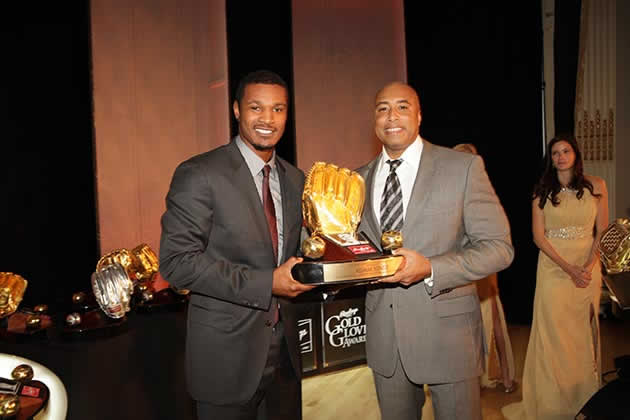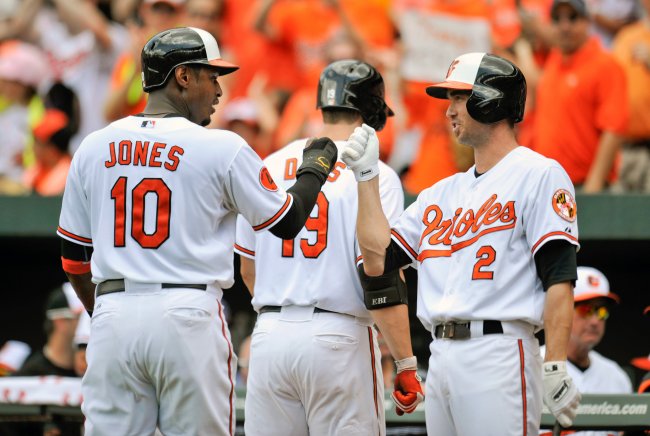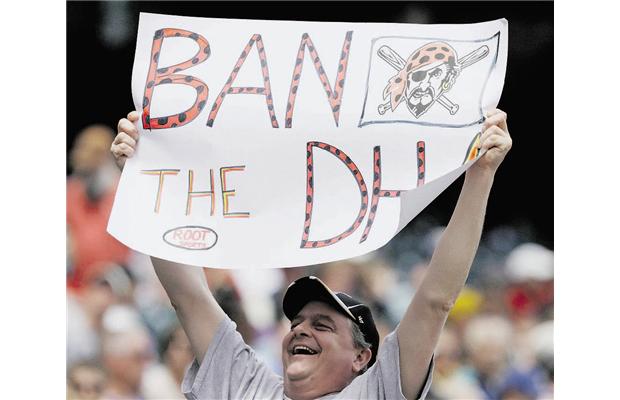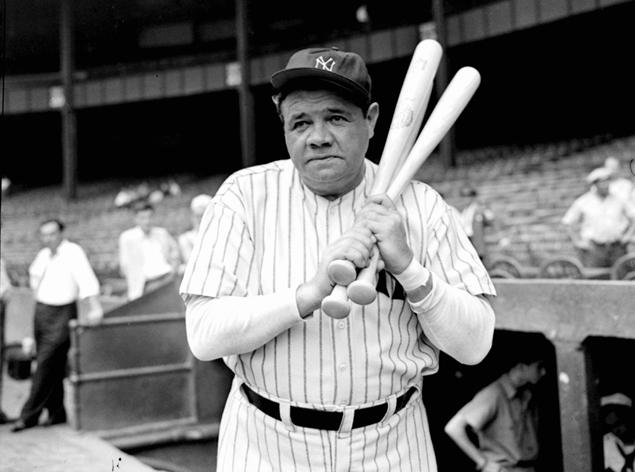
Written by Joseph Hubbs & Media by Ryan St. Hill
As baseball fans go into withdrawals, the MLB is awarding postseason awards to somewhat tickle the fancy of our deprived souls. Last week the best fielders at each position from both leagues were awarded Rawlings Gold Gloves. This week, the league followed up by handing out the Silver Slugger trophy to the best hitters at each position. Of the 18 Silver Slugger winners, nine received the award for the first time, including the monster first basemen Chris Davis (53 HR, 138 RBI’s) and Paul Goldschmidt (36 HR, 125 RBI’s) who led their respective leagues in homeruns and RBI’s. Now, when you take a look at the ninth player in each league to win the award you notice a startling difference, as the American League winner hit 30 homeruns and drove in 103 runners, while the National League winner boasts a humble zero homeruns and four RBI’s.

Joy R. Absalon-USA TODAY Sports
Baseball fans do not find it alarming that David Ortiz, the winner for best designated hitter, and Zack Greinke, the winner for best hitting pitcher, do not have numbers anywhere close to each other. I mean, Greinke only gets to swing a bat one out of every five days, and his primary focus is pitching. Ortiz, on the other hand, gets paid to sit on the bench during every other half inning, and come out to bat three or four times per game. The attentions of these two Silver Slugger winners clearly exist in different realms of the game. Still, curious fans wonder why Ortiz gets to hit for the Red Sox pitcher, while Greinke does not get a position player from the Dodgers to step out to the plate for him.

The debate heated up when Commissioner Bud Selig introduced interleague in 1997. Interleague play, originally created to spark interest back in to baseball after the 1994 players strike, is a period during the season when National League and American League ball clubs play against each other. Typically this lasted for a couple of weeks. However, last year Selig put the Houston Astros into the American League, establishing an even 15 teams in each league. An odd number of teams in each league meant that all season long, at least one interleague series must be going on. The debate erupted. With Selig’s willingness to have year-round interleague, he would certainly be willing to change the DH rule. Here’s the issue: When National League ball clubs play in an American League ballpark, they do not generally have a hitter who matches up with the AL team’s DH. This gives an unfair advantage to American League teams. Reversely, an AL team loses one of their primary hitters when they play in a national league ballpark. This is just one minute reason some fans support adding a DH to the National League. Not only do those in favor of the DH assume it will make the game more fair, but they claim that the extra power hitter in the middle of the lineup makes the game more exciting. Those against the DH say it makes the game too easy, that it takes away from the strategy of baseball.
For those in favor of the DH because of the entertainment purposes, the statistical evidence does not lie. This past season AL teams averaged 1422 hits, which is 37 more than the average of the NL. The power numbers also favor the league boasting the DH. American League ball clubs averaged 23 more homeruns than NL teams, as well as driving in an average of 53 more runs. Fans can obviously expect to see more action in an AL contest. Let’s look at the production from the Dodgers pitching staff compared to Boston’s DH for the year. Including Greinke, our Silver Slugger pitcher who hit an incredible average of .328, Dodgers starting pitchers hit a slim average of .177, with one homerun and 20 RBI’s. David Ortiz, the Red Sox DH, torches these numbers with his 103 RBI’s. Even if you look at worse AL teams like the Mariners and Twins, the numbers aren’t even close. Kendrys Morales of the Mariners hit 23 homeruns and 80 RBI’s, and Ryan Doumit of the Twins provided his team with 14 homeruns and 55 RBI’s, all significantly better numbers than the Dodgers’ pitching staff.
In light of the statistical evidence it is hard to argue that a DH in both leagues would not improve the entertainment value of baseball and increase viewership. However, those opposed base their arguments on strategy and nostalgia. Major League baseball did not adopt the DH rule until 1973. Until then, pitchers hit in both leagues, and managers’ wheels spun whenever their pitcher was pitching an outstanding game. This is what NL managers still deal with. Say the Dodgers’ Clayton Kershaw is pitching a gem, but he is coming up in the order and the team is down a run. With a runner in scoring position, obviously Don Mattingly is going to want a better hitter at the plate. But how can he take a guy out who is unhittable? It’s quite a predicament, but it is the thing NL fans live for. Also, the concept of the double switch is something that gets lost in the AL. It is a small matter that adds a little spice to the game, and also forces a manager to take out a starting position player. A manager’s job is a little more stressful in NL play, and a lot of fans like to put themselves in their shoes and analyze how they would have made a better move. It is a small entertainment value, but it is what a lot of fans consider “real” baseball.
You also have to look at those pitchers that can, and want to hit. Take Bob Gibson and Carlos Zambrano for example. Gibson hit a career average of .206 with 24 homeruns and 144 RBI’s. In 2008 Zambrano hit a stellar .337 with four homeruns and 14 RBI’s. I think either player would have declined to pitch for an AL team that would have taken away their at-bats. Keep in mind as well that Babe Ruth started his career as an ace pitcher in Boston before getting moved to the outfield for his bat. If there had been a DH at that time, the Great Bambino may have never been discovered!

Media by bleacherreport.com
So we have our strategy/nostalgia people, and we have our entertainment people. It is just a matter of what style of baseball you prefer. Now, if I was given the reigns of the MLB, which I assure you, as much as I would love that, it would never happen, I would keep the format as it is. Shocking, I know. National League style baseball is more intriguing, but AL style baseball is entertaining. Personally, I prefer the strategy involved in the NL and I would hate to see the tradition leave baseball altogether. However, the DH has done something great for baseball, past the statistical value. It allows older baseball players to extend their careers. Guys like David Ortiz and Edgar Martinez never would have lasted in the MLB had they not had the opportunity to prolong their careers as hitters. Does it give AL teams an advantage in signing power hitters for extended periods of time? Yes. Albert Pujols and Prince Fielder signed huge long term deals that they never could have received with NL clubs, but these are only a couple of elite players. For the most part they will not give an advantage over NL teams other than a few interleague games and the World Series, so it is not a big issue. As Commissioner Bud Selig and the rest of MLB loom over the possibility of a rule change, keep this in mind, and be sure to pay attention to the postseason awards coverage continuing this week.




























